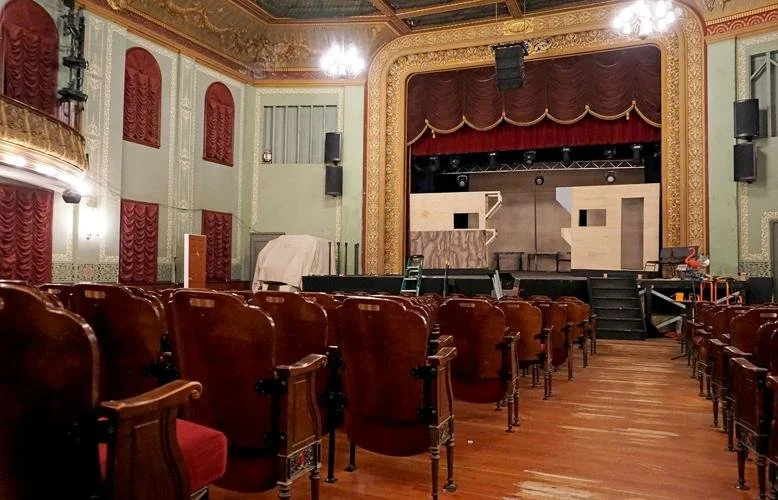Defense of Swastikas on Ceiling Sparks Backlash at Connecticut Community Theatre
by Chris Peterson
This fall, performers in Landmark Community Theatre’s Fiddler on the Roof will take the stage at the Thomaston Opera House in Connecticut. They'll sing about faith, persecution, tradition, and resilience. And they'll do it while standing beneath 32 swastikas.
Not figuratively. Literally. Swastikas—restored in full color as part of a $3.5 million state-funded renovation—now decorate the theatre ceiling overhead. And no matter how much historical context appears on lobby signage, that decision is impossible to justify.
Yes, those swastikas were part of the original 1884 design. Yes, the original meaning of the symbol is much different. And yes, they predate the Nazis by decades. But that doesn’t change what they mean now. The decision to restore them, fully and unapologetically, shows a stunning lack of empathy for today’s audiences and artists, especially Jewish community members. And especially the cast of Fiddler, a show rooted in Jewish identity and survival.
This is not just about symbols. It’s about who gets to feel safe and respected in a public arts space. A Jewish family had already canceled their wedding to take place there. Jeffrey Dunn, the theatre’s executive director, has voiced his discomfort, even asking aloud, “So why do we want this in the ceiling?” Yet the project moved forward. Restoration committee members claim the decision to restore the swastikas was unanimous. Either way, the result is the same: performers will stand beneath symbols of hate while the people in charge insist it was done with care and historical accuracy.
(Photo: Reddit)
And this one hits especially close to home for me. I grew up in Connecticut. I know the Thomaston Opera House. I know Landmark Community Theatre. In fact, OnStage Blog got its start covering theatre in this very region. I’ve seen firsthand how much talent, heart, and pride exists in that building. Which makes this decision even harder to understand. This wasn’t some accidental oversight. It was a choice. A conscious one.
Michael Burr, chairman of the restoration committee, has publicly defended that choice. He’s said, “We were very sensitive to it when we first uncovered it. We did a lot of research and found there are buildings all over the country with swastikas.” He’s also claimed, “Where’s the outrage? We’re prepared. We did our homework. It wasn’t a decision that was made without consideration.” And perhaps most directly: “That’s what they gave us the grant money to do… Are you going to change everything? It’s an historic restoration.”
In other words: the symbols are back because they were always there. Because that’s what the money was for. Because other buildings have them, too.
But just because something is historical doesn’t mean it should be reintroduced without a conversation, especially not in a space designed to serve the public, and especially not when it involves one of the most painful symbols in modern history.
Supporters of the restoration argue that it offers a “teachable moment.” And in a perfect world, maybe that would be true. But context can’t always do the heavy lifting. A sign in the lobby doesn’t cancel out the impact of looking up and seeing swastikas above your head while attending a wedding, a concert, or a musical about Jewish persecution.
This doesn’t feel like education. It feels like erasure dressed up as preservation.
And here’s the worst part: it didn’t have to be this way. The restoration team had options. They made a choice, a very deliberate one. They chose historical accuracy over empathy. They chose symbolism over sensitivity. They chose to focus on the ceiling instead of the people who would be sitting and performing beneath it.
And now, the Thomaston Opera House, a place that should feel like a creative home, is making a lot of people feel uncomfortable, unwelcome, and unheard.
If your theatre project ends with canceled weddings, frustrated artists, and a divided community, it’s not a success. It’s a failure in priorities.
And if those swastikas remain uncovered, maybe it’s time for Landmark Community Theatre to make a choice of their own. Because performing Fiddler on the Roof, a show about the Jewish experience, about displacement and survival, under a ceiling lined with swastikas is not just tone-deaf. It’s unacceptable.
There are other theatres. There are other stages. CT is rich with them. There are places that do not proudly display one of history’s most hateful symbols in the name of authenticity.

